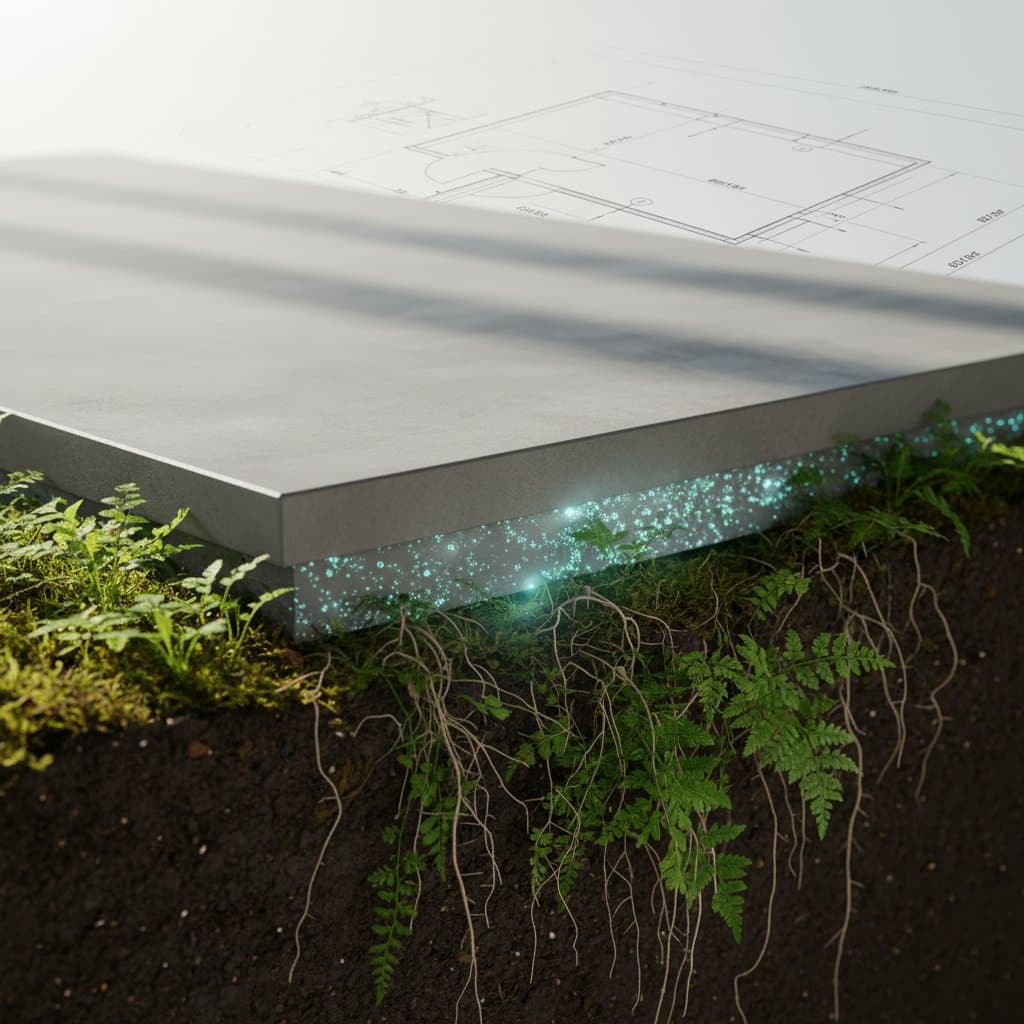Embrace Carbon-Negative Concrete for Eco Foundations
Imagine stepping barefoot across a new patio. The surface feels solid and cool. Beneath it lies carbon-negative concrete, a material that absorbs more carbon than it emits. This innovation turns ordinary foundations into active carbon sinks. Homeowners now achieve sustainability without compromising strength or aesthetics.
The Challenge Beneath Our Feet
Concrete forms the backbone of modern construction, from driveways to kitchen floors. Traditional cement production releases substantial carbon dioxide into the atmosphere. Homeowners increasingly seek responsible building options that maintain durability.
Carbon-negative concrete addresses this issue directly. It retains the familiar sturdiness of standard mixes. Yet it captures and stores carbon permanently within the material. This approach reduces environmental impact starting from the ground up.
A Smarter Way to Build
Carbon-negative concrete incorporates mineral additives that absorb carbon dioxide during curing. Some processes capture carbon from industrial sources and integrate it into the mix. The carbon reacts with calcium to form stable, non-releasing compounds.
This method aligns seamlessly with existing construction practices. Builders mix, pour, and finish the material as usual. The added benefit of carbon sequestration enhances the purpose of every project.
How to Incorporate Carbon-Negative Concrete in Your Project
Integrate this material into renovations or new builds with these steps.
-
Start with your foundation. Consult contractors or structural engineers experienced in carbon-negative mixes. Ready-mix suppliers often provide options under various brand names. Target foundations, slabs, and retaining walls for maximum volume impact.
-
Extend it to visible surfaces. Apply the mix to driveways, patios, and countertops. For an outdoor kitchen base, seal with a natural matte finish to ensure elegance and ease of maintenance.
-
Choose local suppliers. Select regional producers using recycled aggregates or mineral by-products. Opt for plants that source captured carbon from nearby industries to minimize transport emissions.
-
Mind your finishes. Dye, polish, or texture the concrete like traditional varieties. Achieve a modern appearance with a smooth trowel finish and light sealant. Create rustic appeal through exposed aggregate techniques.
Pros and Cons to Keep in Mind
Pros:
- Offers superior compressive strength over standard mixes
- Lowers overall project carbon emissions
- Integrates with conventional construction techniques
- Provides long-term durability and minimal upkeep
Cons:
- Involves a modest initial cost increase, though prices decline steadily
- Availability varies by region
- Demands supplier coordination for quality consistency
The premium typically ranges from ten to fifteen percent. This expense integrates well within total project budgets. Enhanced longevity further justifies the investment through reduced future replacements.
Practical Considerations
Cost: Anticipate a slight premium, with bulk orders yielding better rates from local producers. Long-term benefits include lower environmental costs and extended material life.
Cleaning and Maintenance: Handle it similarly to regular concrete. Use a soft mop and pH-neutral cleaner for indoor surfaces. Perform outdoor pressure rinses annually to preserve appearance. Employ a long-handled duster on sealed countertops to prevent minor abrasions.
Timeline: Installation proceeds at the same pace as conventional concrete. Curing times may differ slightly by formula, but projects rarely face delays.
Local Suppliers: Explore options from producers like CarbonCure or Blue Planet Concrete, which maintain broad distribution. Many local batch plants license comparable technologies for accessible eco-mixes.
Why It Feels Different
Standing on a carbon-negative slab evokes a sense of accomplishment. The surface resembles standard concrete in appearance and feel. Knowledge of its carbon-offsetting role adds intangible value.
This choice supports climate efforts without altering design or functionality. Share the story with visitors: the patio represents tangible progress in sustainable living.
Making It Happen
Initiate discussions during the design phase. Engage architects, builders, and suppliers to identify suitable mixes. Present physical samples to clarify color and texture expectations.
Prioritize high-impact areas such as driveways, garages, and basements. In remodels, replace aging slabs or patios to boost both performance and eco-profile.
Small-scale adoption builds toward broader responsibility. Every application contributes to reduced emissions.
Living with Your Design
Daily life proceeds unchanged after installation. Peace of mind emerges from the knowledge of environmental contributions. Patios for morning coffee, steady foundations, and welcoming driveways now serve dual purposes: structural support and planetary benefit.
